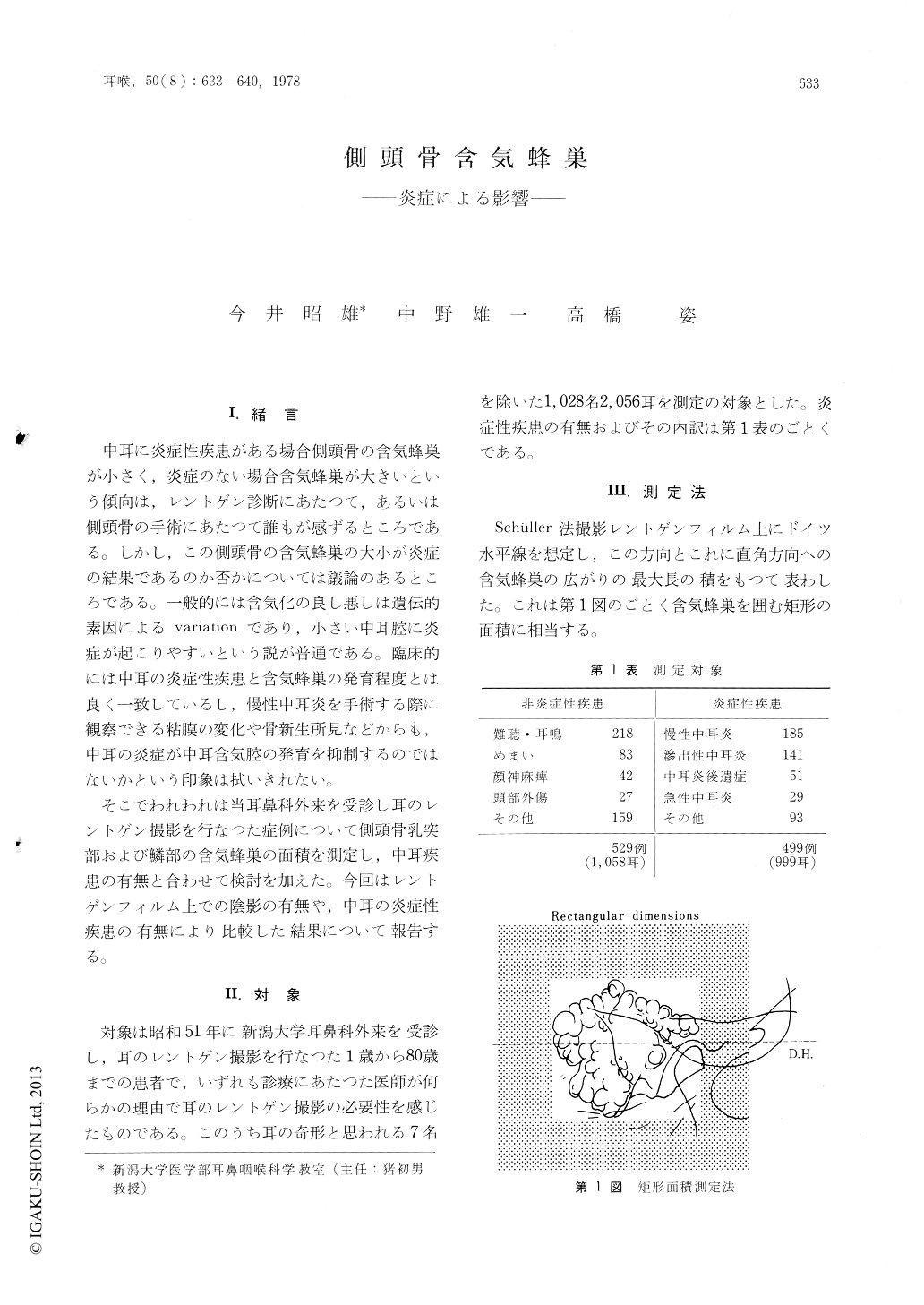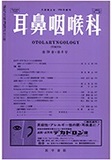Japanese
English
- 有料閲覧
- Abstract 文献概要
- 1ページ目 Look Inside
I.緒言
中耳に炎症性疾患がある場合側頭骨の含気蜂巣が小さく,炎症のない場合含気蜂巣が大きいという傾向は,レントゲン診断にあたつて,あるいは側頭骨の手術にあたつて誰もが感ずるところである。しかし,この側頭骨の含気蜂巣の大小が炎症の結果であるのか否かについては議論のあるところである。一般的には含気化の良し悪しは遺伝的素因によるvariationであり,小さい中耳腔に炎症が起こりやすいという説が普通である。臨床的には中耳の炎症性疾患と含気蜂巣の発育程度とは良く一致しているし,慢性中耳炎を手術する際に観察できる粘膜の変化や骨新生所見などからも,中耳の炎症が中耳含気腔の発育を抑制するのではないかという印象は拭いきれない。
そこでわれわれは当耳鼻科外来を受診し耳のレントゲン撮影を行なつた症例について側頭骨乳突部および鱗部の含気蜂巣の面積を測定し,中耳疾患の有無と合わせて検討を加えた。今回はレントゲンフィルム上での陰影の有無や,中耳の炎症性疾患の有無により比較した結果について報告する。
Since Wittmaack, there have been many arguments on the development of pneumatization of the temporal bone. It seems generally accepted that the size variation is conducted by disposition, and that inflammatory middle ear diseases occur more commonly in the smaller air cell system than in the larger. In this paper, measuring the size of air cell system on X-ray film by the rectangular method, the authors recognized characteristic pattern in the distribution of size and difference between both sides. These results consequently suggest the influence of inflammation of the middle ear on the development of pneumatization.

Copyright © 1978, Igaku-Shoin Ltd. All rights reserved.


